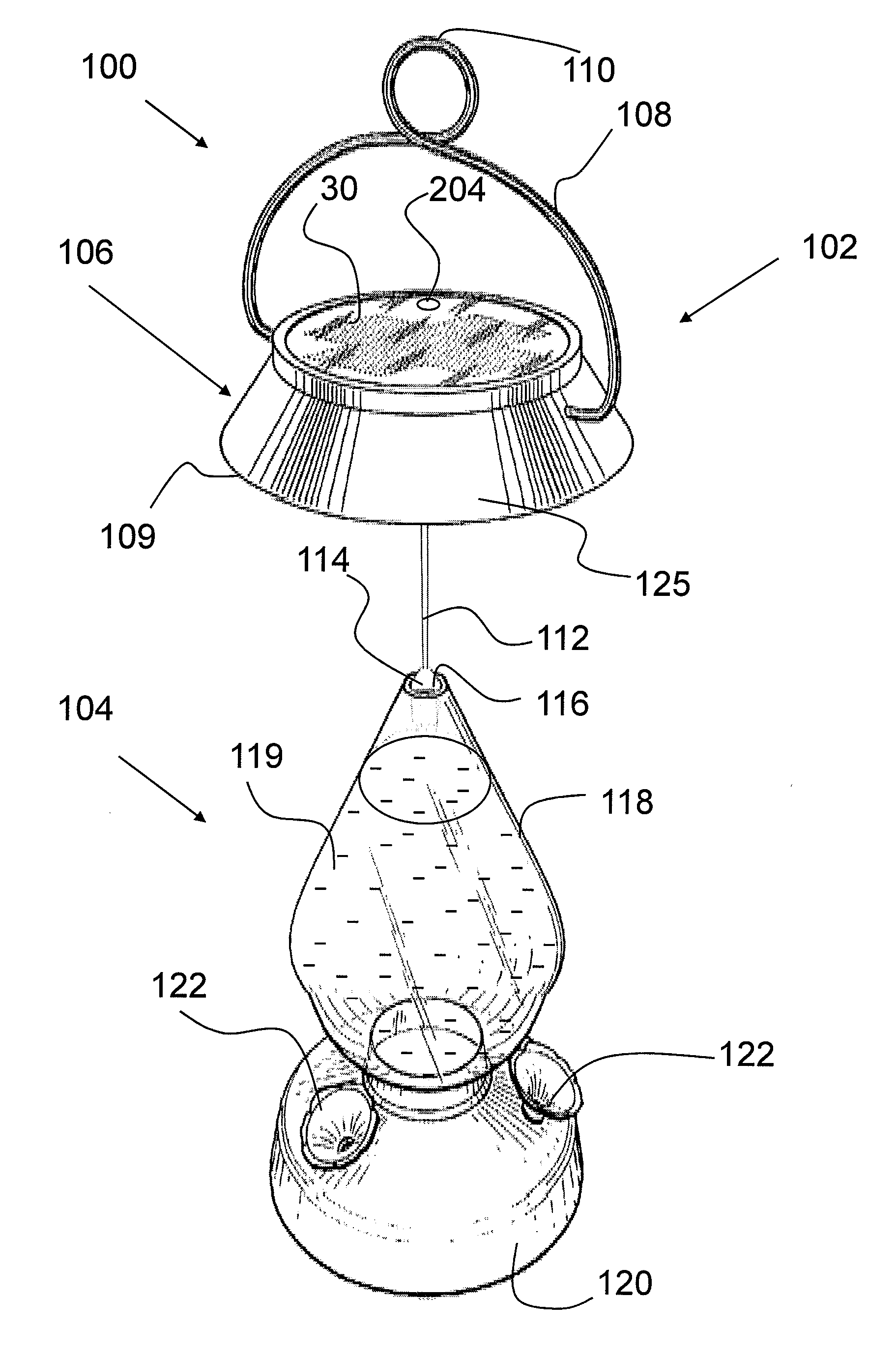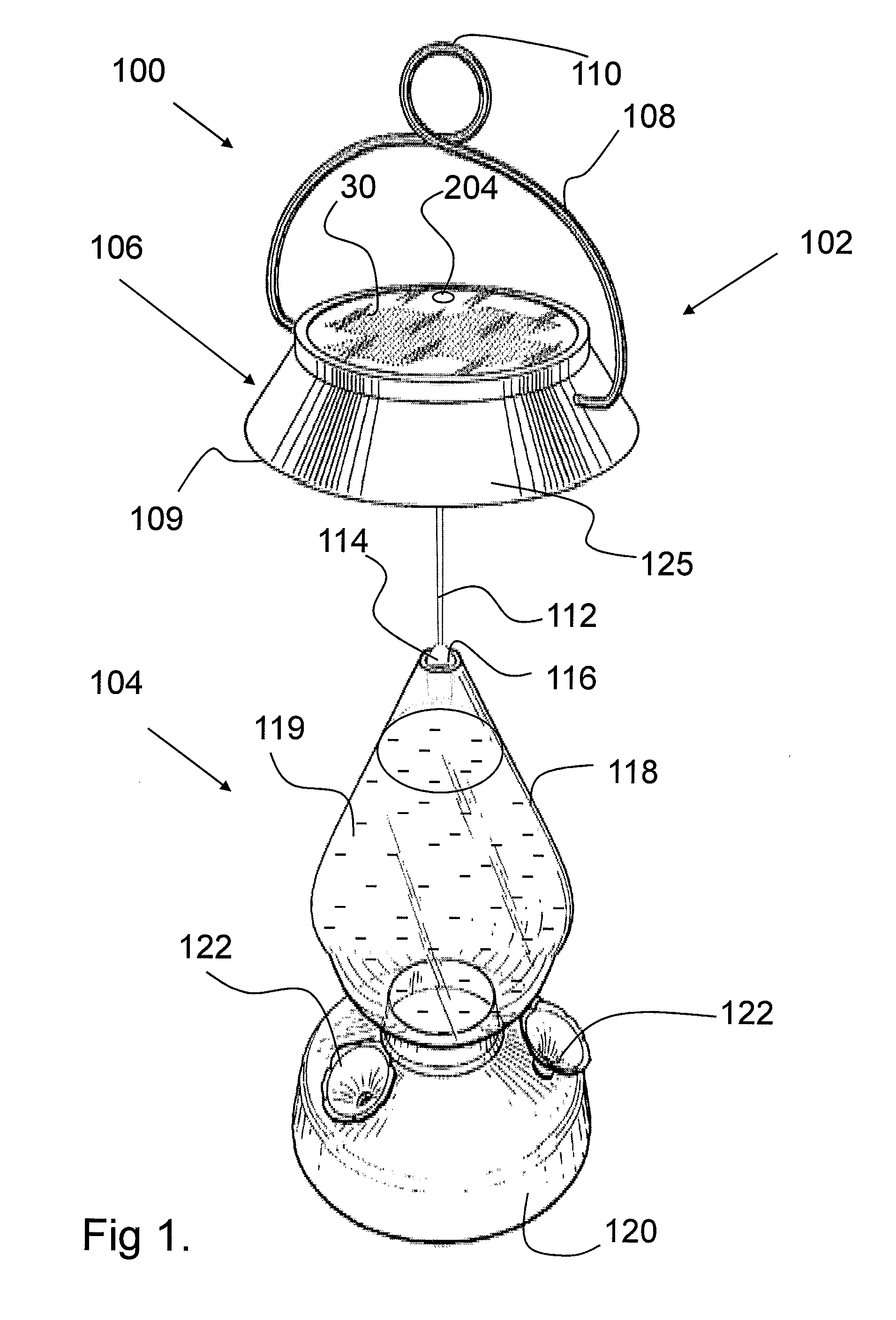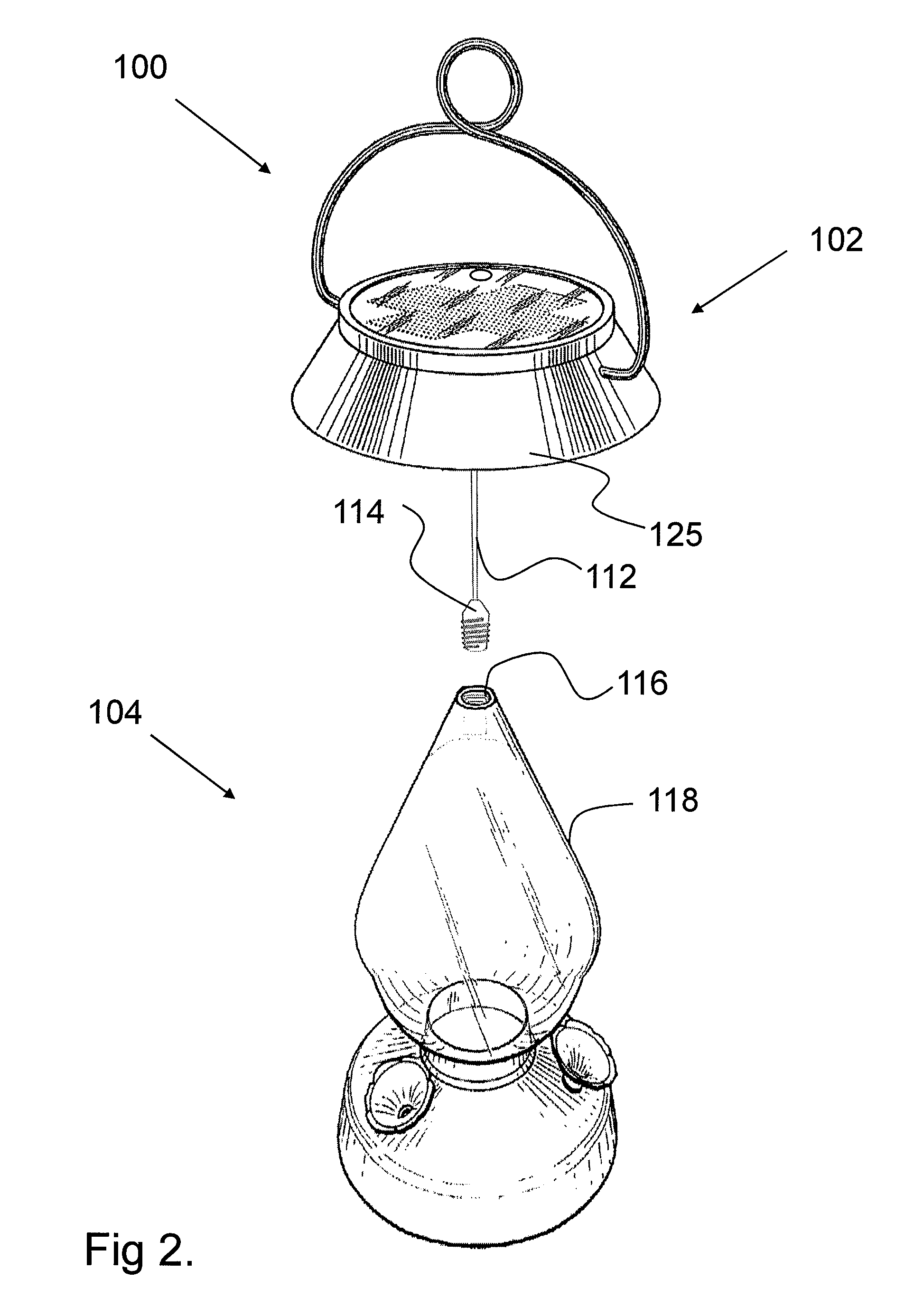Illuminated Hummingbird Feeder
- Summary
- Abstract
- Description
- Claims
- Application Information
AI Technical Summary
Benefits of technology
Problems solved by technology
Method used
Image
Examples
second embodiment
[0090]FIG. 5 is a cross-sectional view of an unassembled food reservoir 602 for a solar powered illuminated hummingbird feeder in accordance with the present invention. It shows the unassembled food reservoir 602 comprising an upper neck portion 610 that contains a socket receiving cavity 612, a reservoir portion 604 substantially enclosing a cavity 606, and an aperture 608. The unassembled food reservoir 602 is constructed from a hand-blown glass with the neck portion added and the aperture drilled out as second and third manufacturing operations respectively. Alternatively, there may be no socket receiving cavity 612 but instead the socket housing module 116 of FIG. 4 may be integrally formed with the neck portion 610. The food reservoir 602 is an elongated substantially cylindrically shaped container for housing liquid hummingbird feed solution. Other geometric shapes and sizes, as well as shapes in form of animals and flowers, of different colors for the solution reservoir are p...
third embodiment
[0125]FIGS. 8A and 8B are schematic and cross-section views of a suspendible solar powered lighting assembly 800 in accordance with the present invention. The suspendible solar powered lighting assembly 800 comprises a lighting module 114, suspension wires 112 between the lighting module 114 and an operative components compartment 802 containing control circuitry and a rechargeable power source, suspension wires 808 between the compartment 802 and at least one suspended solar panel 815. The operative components compartment 802 contains rechargeable batteries 124 which are vertically oriented. The operative components compartment 802 is preferably suspended from a central hanging point. The batteries 124 are preferably recharged by two substantially vertically oriented substantially parallel and outwardly facing amorphous silicon solar panel 815 located at the end of a suspension assembly 800 suspended by electrical wires 808 from the an operative components compartment 802. In the e...
fourth embodiment
[0140]FIG. 10A is a schematic view of a solar powered illuminated hummingbird feeder 872 in accordance with the present invention. The present embodiment is an alternative hummingbird feeder design to the design disclosed in FIG. 9B. In the present embodiment there is a feeding assembly 870 which comprises a cap assembly 876 with an integral moat design which carries a hanging ring 878 which together provide support means and ant deterrent features for the feeder. The cap assembly 876 is preferably releasably attached to a liquid food reservoir 874 containing a nectar-like liquid food source 119, a covered feeding bowl assembly 882, a perch portion 880 and feeding stations 884. Attached to an at least partially light transmissive lower portion of the covered feeding bowl assembly 882 of the feeding assembly 870 is an illumination source. Suspended below the lighting module 114 is the previously suspendible solar powered lighting assembly 800 of FIG. 8A. Together these comprise an il...
PUM
 Login to View More
Login to View More Abstract
Description
Claims
Application Information
 Login to View More
Login to View More - R&D
- Intellectual Property
- Life Sciences
- Materials
- Tech Scout
- Unparalleled Data Quality
- Higher Quality Content
- 60% Fewer Hallucinations
Browse by: Latest US Patents, China's latest patents, Technical Efficacy Thesaurus, Application Domain, Technology Topic, Popular Technical Reports.
© 2025 PatSnap. All rights reserved.Legal|Privacy policy|Modern Slavery Act Transparency Statement|Sitemap|About US| Contact US: help@patsnap.com



